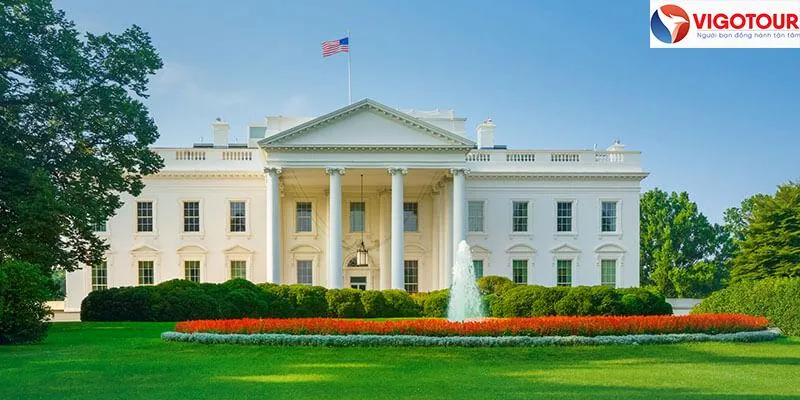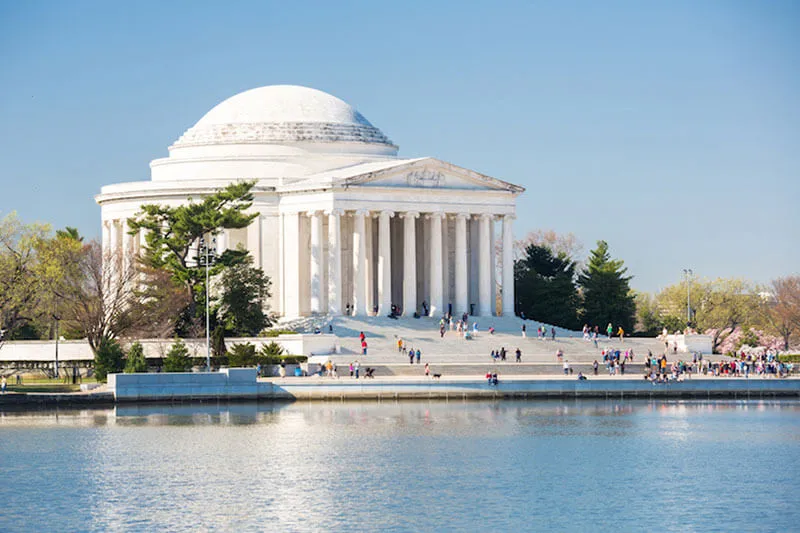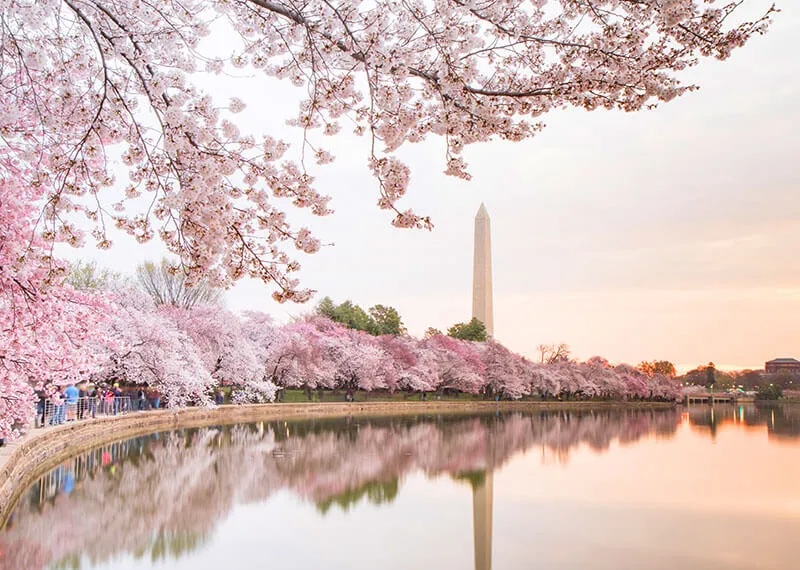Washington State, nestled in the Pacific Northwest of the United States, is renowned not only for its modern cities and majestic natural landscapes but also as a hidden paradise for wildlife photography enthusiasts. Contrary to the common image of Washington D.C. with its magnificent architectural landmarks, Washington State presents an astonishingly diverse biodiversity, from lush temperate rainforests and the imposing Cascade Mountains to the pristine Pacific coast. This article will share valuable insights to help you fully enjoy a unique and memorable wildlife photography tour in Washington, while also discovering the lesser-known natural beauty of this state.
Washington: An Unexpected Wildlife Photography Destination
When Washington is mentioned, many people immediately think of Washington D.C., the capital, with the White House, the Capitol Building, and famous historical museums. However, few realize that Washington State, located far from the capital on the West Coast of the United States, is a natural treasure trove with a rich and diverse wildlife system. From large mammals like black bears and elk to rare birds and unique marine creatures, Washington offers countless opportunities for wildlife photographers to explore and capture incredible moments of the natural world.

Discover the unexpected beauty of Washington’s nature, where beyond architecture lies a haven for wildlife.
Unlike the hustle and bustle of big cities, Washington State welcomes visitors with the peaceful and fresh atmosphere of untouched nature. Vast national forests, state parks, and wildlife refuges are home to countless animal species, creating an ideal environment for those who want to immerse themselves in nature and practice their photography skills.
Why Washington is an Ideal Destination for Wildlife Photography Tours
Washington possesses numerous factors that make it an attractive destination for wildlife photography tours, including:
- Biodiversity: With its diverse terrain and climate, Washington is home to a wide variety of animals. You can find black bears, elk, white-tailed deer, coyotes, red foxes, beavers, river otters, ground squirrels, hares, and numerous bird species such as bald eagles, owls, woodpeckers, sparrows, hawks, along with various reptiles, amphibians, and fish. Washington’s coastal waters are also inhabited by whales, seals, sea lions, and many other marine creatures.
- Accessibility: A well-developed transportation system makes it easy to travel to Washington’s wilderness areas. Many national parks and refuges have well-maintained hiking trails and driving roads, facilitating movement and wildlife spotting.
- Good Tourist Infrastructure: Washington offers a wide range of accommodation options, from luxury hotels to campsites in nature. Tourist support services such as guided tours, equipment rentals, and tourist information are readily available to serve visitors.
- Scenic Beauty: Beyond its diverse wildlife, Washington boasts stunning natural landscapes. From dense forests, majestic mountains, and magnificent waterfalls to pristine coastlines, each location offers wonderful frames for photographers.
Popular Wildlife Photography Locations in Washington
Washington has many ideal locations for participating in wildlife photography tours. Here are some notable suggestions:
- Olympic National Park: Located in western Washington, Olympic National Park is a biodiversity hotspot with three main ecosystems: coastline, temperate rainforest, and high mountains. Here, you may have the opportunity to photograph black bears, Roosevelt elk, Columbia black-tailed deer, river otters, beavers, and various seabirds.

Olympic National Park, where the beauty of natural architecture blends with the richness of wildlife.
- Mount Rainier National Park: With the majestic Mount Rainier volcano at its center, this national park features a distinctive alpine ecosystem. You can find mountain goats, Olympic marmots, pikas, red foxes, and many high-altitude bird species. In summer, vibrant wildflower meadows further enhance the beauty of the natural scenery here.
- Ridgefield National Wildlife Refuge: Situated along the Columbia River, this refuge is a wintering ground for thousands of greater sandhill cranes. You can also observe other waterfowl, birds of prey, and small mammals.
- San Juan Islands: The San Juan Islands are a fantastic destination for marine wildlife photography. You can join boat tours to observe humpback whales, gray whales, orca whales, seals, sea lions, and sea otters.

Imagine the grandeur of the Lincoln Memorial, similar to the feeling of witnessing the raw beauty of wildlife in nature.
- Gifford Pinchot National Forest: This vast forest includes numerous lakes, rivers, and mountains, providing an ideal habitat for black bears, deer, elk, and many bird species. You can explore the forest by hiking, camping, or driving along scenic routes.
Ideal Time to Join a Wildlife Photography Tour in Washington
The best time to join a wildlife photography tour in Washington depends on the animal species you want to photograph and the area you want to explore.
- Spring (March – May): This is the breeding season for many animals, making it a great time to observe young animals and mating activities. Blooming wildflowers also create beautiful backdrops for photos. However, the weather can still be quite cool and wet.

Memorial wall, reminiscent of the patience and stillness required when waiting for the perfect wildlife photography moment.
- Summer (June – August): The weather is warm and dry, ideal for outdoor activities. Animals are more active foraging and preparing for winter. This is a good time to observe animals in high mountain and coastal areas. However, this is also peak tourist season, and locations may be more crowded.
- Autumn (September – November): The weather is cool and pleasant, and the changing leaves create a romantic setting. Many animals begin migrating or stockpiling food for winter, offering unique observation opportunities. This is also a less crowded season, offering more peace and privacy.
- Winter (December – February): Some areas in Washington experience heavy snowfall, creating stunning winter landscapes. Winter is a good time to observe wintering birds and animals adapted to cold environments. However, some areas may be difficult to access due to snow and ice.
Essential Equipment for a Wildlife Photography Tour in Washington
To have a successful wildlife photography tour in Washington, preparing the right equipment is crucial. Here is a list of essential gear:
- Camera: A DSLR or mirrorless camera with fast shooting capabilities and good image quality is ideal.
- Lens: A telephoto lens with a focal length of 300mm or longer is necessary for photographing animals from a distance. Versatile zoom lenses like 100-400mm or 200-500mm will be very useful.
- Tripod: A tripod helps stabilize the camera and lens, especially when using heavy telephoto lenses and shooting in low light conditions.
- Memory Cards and Spare Batteries: Ensure you have enough high-capacity memory cards and spare batteries so you don’t miss any moments.
- Camera Backpack: A specialized backpack helps protect your equipment and carry it comfortably while moving.
- Appropriate Clothing: Choose comfortable, warm, and waterproof clothing suitable for the weather conditions and terrain you will be exploring.
- Hiking Boots: Hiking boots help you move easily and safely on various terrains.
- Binoculars: Binoculars help you observe animals from a distance before approaching to take photos.
- Wildlife Guidebook: A guidebook helps you identify animal species and learn more about their behavior.

Similar to the meticulous detail in the Jefferson Memorial’s architecture, thorough equipment preparation is key to a successful photography trip.
Tips and Experiences for Wildlife Photography in Washington
To increase your chances of success and capture beautiful photos on your wildlife photography tour in Washington, keep the following tips and experiences in mind:
- Learn about the Location and Animals: Research in advance about the location you will visit and the animals you might encounter. Learn about their behavior, habitat, and activity times.
- Patience and Silence: Wildlife photography requires patience and silence. Take your time to wait and observe, avoid making noise or scaring animals.
- Go in the Early Morning or Late Afternoon: Animals are usually most active in the early morning and late afternoon, when the soft light also creates good conditions for photography.
- Camouflage: Wear neutral-colored clothing and blend into your surroundings to minimize your visibility to animals.
- Maintain a Safe Distance: Always maintain a safe distance from wildlife, not only for your safety but also to avoid disturbing or stressing them.
- Respect Nature: Do not litter, do not damage animal habitats, and adhere to the regulations of national parks or refuges.
- Join a Guided Tour: If you are a beginner or want to increase your chances of observing and photographing animals, consider joining guided photography tours led by local experts. They have the experience and knowledge to take you to the best locations and help you identify and approach animals safely and effectively.
Choosing the Right Wildlife Photography Tour in Washington
Many tour companies and local guides offer wildlife photography tours in Washington. When choosing a tour, consider the following factors:
- Tour Type: There are many different types of tours, from hiking tours, boat tours, camping tours to customized private tours. Choose a tour type that suits your preferences, fitness level, and photography goals.
- Location and Target Animals: Determine the location you want to visit and the animal species you want to photograph to select a suitable tour.
- Duration and Cost: Tours can last from a few hours to several days, with costs varying depending on the length, type, and services included. Compare different options to find a tour that fits your budget and time.
- Reputation and Experience of the Tour Provider: Research the reputation and experience of the tour company or guide. Read reviews from previous customers to ensure you choose a quality and reliable tour provider.
- Included Services: Clearly understand the services included in the tour, such as guide, transportation, meals, accommodation, permits, and equipment (if any).

Tidal Basin with cherry blossom beauty, similar to the blooming of experience when you successfully capture wildlife moments.
Conclusion
Participating in a wildlife photography tour in Washington is a wonderful experience for those who love nature and photography. With rich biodiversity, majestic natural landscapes, and good tourist infrastructure, Washington offers unique and memorable wildlife photography opportunities. By preparing thoroughly, researching information, and applying the experiences shared in this article, you will be able to fully enjoy your journey exploring the wild natural world of Washington and bring back impressive wildlife photos. Plan your photography trip today and discover the hidden beauty of Washington, a place that is not only home to magnificent architectural landmarks but also a paradise for wildlife!